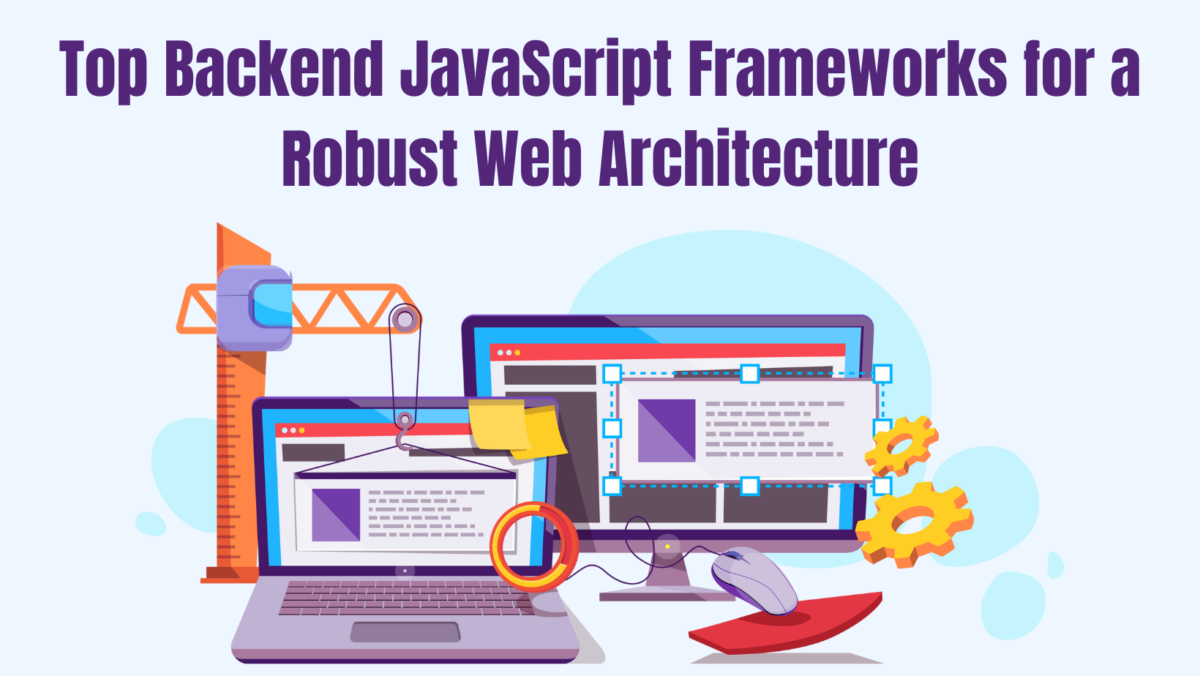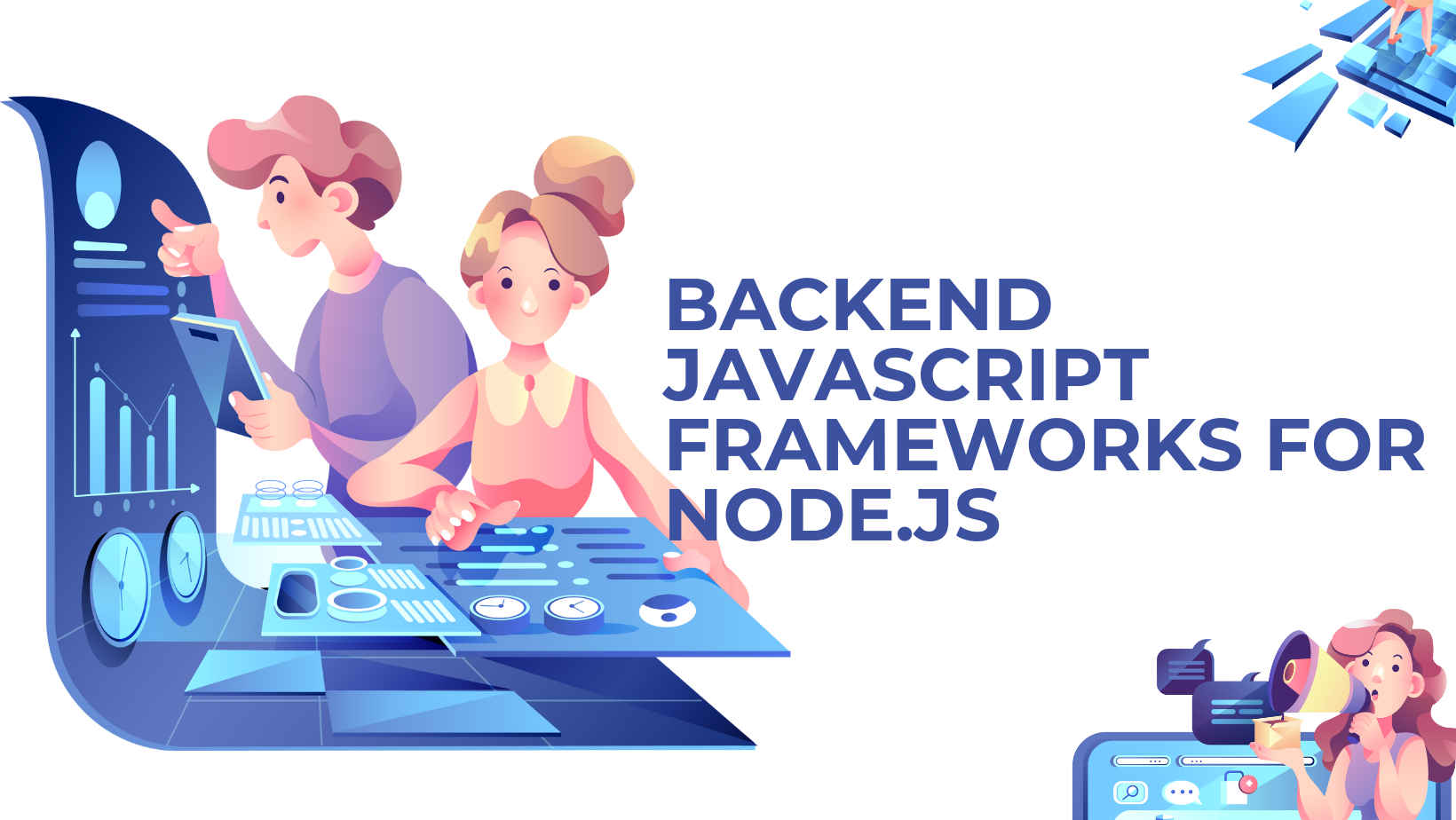This website uses cookies so that we can provide you with the best user experience possible. Cookie information is stored in your browser and performs functions such as recognising you when you return to our website and helping our team to understand which sections of the website you find most interesting and useful.
Unleashing the Power of Node.js: Top Backend JavaScript Frameworks for a Robust Web Architecture

As web development continues to progress at a rapid pace, it’s important to ensure that your web architecture is robust and capable of meeting the demands of modern applications. One of the best tools to accomplish this is Node.js, a highly powerful and versatile backend JavaScript runtime that has become the go-to choice for many developers. In this article, we’ll provide an introduction to Node.js and explore some of the best backend JavaScript frameworks that you can use to build a robust web architecture. By the end of this article, you’ll have a solid understanding of how to leverage Node.js to build a rock-solid backend architecture.
Introduction to Node.js and Backend JavaScript Frameworks
Node.js is a popular runtime environment that allows developers to run JavaScript code outside of a web browser. It is built on top of Chrome’s V8 engine and is known for its lightning-fast performance, making it an ideal choice for building high-performance web applications.
But why use Node.js for backend development? There are several reasons why Node.js is preferred for backend development. Firstly, it utilizes a single-threaded event loop model that allows it to handle large volumes of simultaneous connections without slowing down. This means that Node.js is incredibly scalable and can handle a high volume of traffic without any issues.
In addition, Node.js is incredibly versatile and flexible, allowing it to be used for everything from microservices to full-stack web development. This means that developers can use Node.js to build a wide range of applications, from small, simple applications to large, complex applications.
Finally, the large ecosystem of Node.js modules and packages ensures that developers have access to everything they need to build powerful applications. This means that developers can easily find and use existing modules and packages to speed up development and reduce the amount of code they need to write.
Why Choose Backend JavaScript Frameworks?

While Node.js provides a solid platform for building backend applications, backend JavaScript frameworks take things to the next level by providing a structured and organized approach to building complex applications. These frameworks provide a higher-level abstraction over Node.js that simplifies common tasks such as routing, request handling, and database integration.
One popular backend JavaScript framework is Express.js. Express.js is a minimalist framework that provides a simple and flexible way to build web applications and APIs. It provides a number of useful features out of the box, such as middleware support, routing, and template engines.
Another popular backend JavaScript framework is Koa.js. Koa.js is a newer framework that is built on top of Node.js and provides a more modern and streamlined approach to building web applications. It is designed to be lightweight and modular, allowing developers to easily add and remove functionality as needed.
Overall, backend JavaScript frameworks provide a powerful toolset for building complex web applications. They simplify common tasks and provide a higher-level abstraction over Node.js, allowing developers to focus on building their application logic rather than worrying about low-level details.
Key Features of Node.js
Event-Driven Architecture
Node.js is built on an event-driven architecture that allows it to handle large volumes of concurrent connections efficiently. This architecture enables Node.js to process requests asynchronously, ensuring that responses are sent to clients as quickly as possible.
One of the key benefits of Node.js’s event-driven architecture is that it allows developers to build highly responsive and scalable applications. By handling requests asynchronously, Node.js can continue processing other requests while it waits for I/O operations to complete. This means that Node.js can handle a large number of requests without slowing down, even under heavy load.
Another benefit of Node.js’s event-driven architecture is that it makes it easy to build real-time applications, such as chat applications and online games. By using WebSockets and other real-time technologies, developers can build applications that can push data to clients in real-time, without the need for frequent polling.
Non-Blocking I/O Model
The non-blocking I/O model used by Node.js allows it to handle many simultaneous connections without blocking the event loop. This enables Node.js to handle a large number of requests without slowing down, even under heavy load.
One of the key benefits of Node.js’s non-blocking I/O model is that it allows developers to build highly scalable applications that can handle a large number of concurrent connections. By using non-blocking I/O operations, Node.js can continue processing other requests while it waits for I/O operations to complete. This means that Node.js can handle a large number of requests without slowing down, even under heavy load.
Another benefit of Node.js’s non-blocking I/O model is that it makes it easy to build applications that rely heavily on I/O operations, such as file uploads and downloads, database queries, and network communication. By using non-blocking I/O operations, developers can ensure that their applications remain responsive and performant even when handling large volumes of data.
Scalability and Performance
Node.js has proven to be incredibly scalable and performant, thanks to its efficient event-driven architecture and non-blocking I/O model. Node.js is capable of handling a large number of connections concurrently, making it ideal for building high-performance applications.
One of the key benefits of Node.js’s scalability and performance is that it allows developers to build applications that can handle a large number of concurrent connections without sacrificing performance. By using Node.js‘s event-driven architecture and non-blocking I/O model, developers can build highly responsive and scalable applications that can handle a large number of users without slowing down.
Another benefit of Node.js’s scalability and performance is that it makes it easy to build applications that can handle a large amount of data. By using Node.js’s efficient I/O operations and its ability to handle large volumes of concurrent connections, developers can build applications that can handle large amounts of data without sacrificing performance.
Large Ecosystem and Community Support
Node.js has a large and vibrant development community, which has contributed to an impressive ecosystem of modules and packages. This ecosystem ensures that developers have access to the tools they need to build powerful and complex web applications with ease.
One of the key benefits of Node.js’s large ecosystem and community support is that it allows developers to build applications quickly and easily. By using existing modules and packages, developers can save time and effort when building their applications, allowing them to focus on building the core features of their applications.
Another benefit of Node.js’s large ecosystem and community support is that it ensures that developers have access to the latest and greatest tools and technologies. By staying up-to-date with the latest developments in the Node.js ecosystem, developers can ensure that their applications remain performant and secure.
Top Backend JavaScript Frameworks for Node.js

Node.js has emerged as a popular platform for building server-side applications and APIs. It is fast, scalable, and easy to use, making it an ideal choice for developers who want to build high-performance applications. One of the biggest advantages of Node.js is that it allows developers to use JavaScript on both the front-end and the back-end, which makes it easier to build full-stack applications. In this article, we will take a look at some of the top backend JavaScript frameworks for Node.js.
Express.js: The Minimalist Framework
Express.js is a minimalist framework that provides a simple and lightweight approach to building web applications with Node.js. It is one of the most popular Node.js frameworks and is used by developers all over the world. Although it is minimalist, it is incredibly flexible and can be used for everything from building simple APIs to full-featured web applications. Express.js is highly modular and extensible, providing developers with a lot of flexibility when it comes to building web applications. It also has a large community of developers who contribute to its development and provide support to other developers.
Koa.js: The Next-Generation Framework
Koa.js is a relatively new backend JavaScript framework that has quickly gained popularity among developers thanks to its focus on simplicity and ease of use. It was developed by the same team that created Express.js and is considered to be its successor. Koa.js provides a lot of powerful features such as middleware, routing, and error handling, making it an excellent choice for building complex web applications. It is also highly modular and extensible, which makes it easy to customize and extend to meet your specific needs.
Hapi.js: The Configuration-Driven Framework
Hapi.js is a configuration-driven framework that provides a lot of flexibility when it comes to building web applications. It is known for its powerful configuration system, which makes it easy to build complex applications quickly and easily. It also has a modular architecture that ensures that your code remains organized and easy to maintain. Hapi.js is used by many large companies such as Walmart and IBM, which is a testament to its power and flexibility.
Sails.js: The MVC Framework for Node.js
Sails.js is a powerful and flexible MVC framework for Node.js that provides a lot of powerful features such as model-view-controller (MVC) architecture, automatic route generation, and support for websockets. It is ideal for building real-time applications such as chat apps or online games. Sails.js has a large community of developers who contribute to its development and provide support to other developers. It is also highly customizable and can be extended to meet your specific needs.
Nest.js: The Versatile and Modular Framework
Nest.js is a versatile and modular backend JavaScript framework that offers a lot of power and flexibility. It provides a lot of powerful features such as dependency injection, support for TypeScript, and a powerful testing framework. Nest.js is highly modular, making it easy to build complex applications that are easy to maintain and scale. It is also highly extensible, which means that you can add new features and functionality to your application as needed.
In conclusion, Node.js offers a lot of advantages when it comes to building server-side applications and APIs. The frameworks listed above are just a few examples of the many powerful tools that are available to developers who want to build high-performance web applications with Node.js. Whether you are building a simple API or a complex web application, there is a Node.js framework that can help you get the job done.
Conclusion
Node.js and backend JavaScript frameworks have revolutionized the way we build web applications. By leveraging Node.js and one of the top backend JavaScript frameworks highlighted in this article, you can build a web architecture that is robust, scalable, and high-performing. Whether you’re building a simple API or a complex real-time application, Node.js and its rich ecosystem of tools and frameworks offer everything you need to get started.



